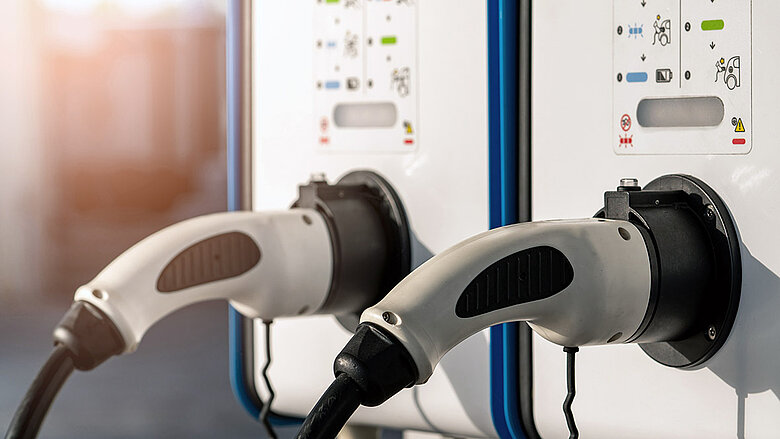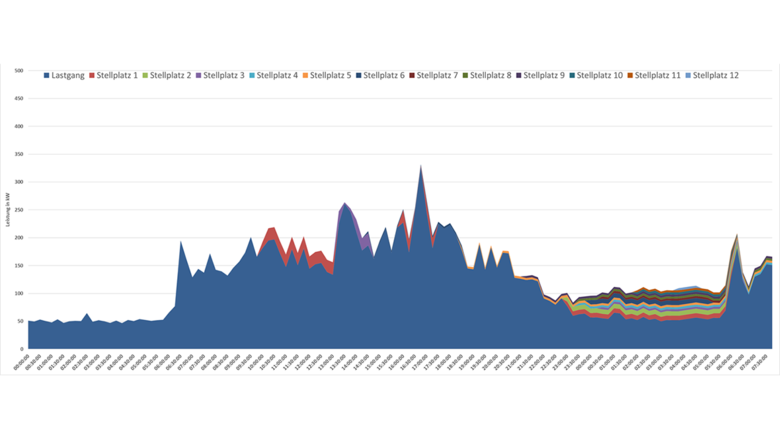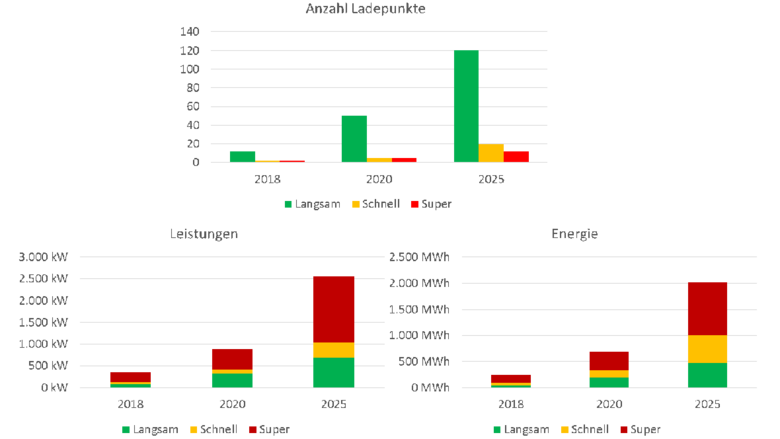Electric vehicles are here. What now? The increasing prevalence and significance of electro-mobility presents a challenge for energy management in the real estate industry.
Electromobility and decentralized generation of electricity go hand in hand
Electromobility is a growing market, but it’s already a fixture in many areas of the real estate business. Contrary to people’s expectations, most charging stations are found on the public streets but within buildings. As a result, electromobility is in many cases “tied” to a charging station. Much in the way that electric forklifts in industrial applications or electric transport vehicles in hospitals and hotels have been re-charging for years, the charging processes for e-cars, e-bikes, etc. will in the future be a matter for the real estate industry.
Electromobility and decentralized generation of electricity go hand in hand
Among the pioneers of electromobility are many people who have been generating their own electricity for years already with the help of photovoltaic systems. Even though these systems are often not yet used for self-sufficiency due to government subsidies, this shows that electric mobility and the use of renewable energies are inextricably linked.
Electromobility only makes ecological sense with green electricity. These first users easily make use of their electricity from their own infrastructure. The first electric vehicles were able to be re-charged overnight using conventional sockets. Only vehicles with a longer range required more charging power if drivers didn’t want to wait for hours. But in extreme cases, even the early adopters were able to provide themselves with 32 A loading technology for agricultural and commercial enterprises, etc.
In addition to "range anxiety", there is concern about a lack of charging infrastructure. However, people fail to realize that a large proportion of mobility requirements can already be met with vehicles that are available today. In addition, vehicles can usually ideally be recharged in places where people stay longer anyway, namely at home, at work, in hotels, etc. In most cases, the need can also be met without major difficulties or with little effort in the real estate industry.
The transition to electromobility involves the real estate industry, too
Recharging stations in public spaces are more difficult to achieve because the required investment is much larger. This is true not only for superchargers that are needed for intermediate loading over long distances. They require enormous effort in terms of connected load and investment.
We’re also talking about the “streetside charging” requirements of drivers who don’t have the necessary recharging equipment in their homes or places of work. It is doubtful whether municipal utilities, regional suppliers or other providers will be able to meet their needs in the long term. Even in countries like Norway, where the charging infrastructure in the public sector has been expanded at great expense for years, it is becoming clear that the successful expansion of electric mobility can only be achieved with the involvement of the real estate industry. The real estate industry thus plays an important role in the successful introduction of electromobility.

Fleet operators are already facing major challenges
A prominent example for the use of fleets of electric vehicles is the German postal service Deutsche Post, which operates a fleet of e-transporters. At some delivery centers, transport traffic is already handled by electric vehicles that are recharged overnight and are ready for use the next day. Companies that rent out e-vehicles also need to be able to reload their fleet at their locations at short notice in order to be able to quickly offer the vehicles to the next customer again.

These examples of early adopters show that in extreme cases the existing building infrastructure is not sufficient. The available power is limited and would have to be expanded at high cost. But in many cases unnecessary investments can be avoided with the help of qualified, practical preliminary assessments and subsequent load management.
In addition to the aforementioned practical examples, various academic studies have also shown that the actual demand for electricity for electromobility in the real estate industry will increase significantly in the coming years. If one considers that the demand for electricity from heat pumps, other electrical heating systems and the increasing demand for air conditioning in the real estate industry will increase as well, it becomes clear which challenges energy management systems will have to meet in the future.
Integrated charging concepts can help transform the energy landscape
Many suppliers of charging technology address the topic by offering their own load and meter management. The disadvantage of these isolated solutions is the lack of compatibility with existing systems in the real estate industry. In concrete terms, this means, for example, that when the capacity limits of the connected load are reached, only one of the charging processes is interrupted. Imagine now that early users of electromobility are immediately handicapped again by this prioritisation.
This unnecessary situation will do lasting damage to the successful adoption of electric mobility in general. A qualified energy manager knows his system technology and knows which other consumption points he can operate with a time delay or temporarily reduced charge without affecting the user's requirements. A qualified energy management system therefore integrates these additional requirements into a holistic energy management system.
At any rate, if electric mobility actually results in a sharp increase in power requirements and consumption, it will be necessary to reassess the option of decentralized energy generation. Before connection services are extended, investments in in-house generation capacities can be significantly more economical and also have the potential to reduce further energy costs in the property. A qualified energy management system is also indispensable in the context of extended plant technology as well.
Electromobility as a building block toward more flexibility
Within the framework of sector coupling, heat, electricity and mobility will thus be networked in the future. In addition to the load profile of the producers and the consumers, the charging profile, resulting from the movement patterns of the vehicles, adds a wide dimension of flexibility.
Electric vehicles can be an additional, often economical power sink from the point of view of BHKWs and solar power systems. In the future, vehicle fleets may even help relieve pressure on the energy infrastructure. In addition to electricity demand and additional connected loads, electromobility is also increasing the capacity of "mobile power storage units" in the real estate industry. It’s easy to imagine that, with the help of an intelligent energy management system, they could be integrated into a holistic operator concept in an economically sensible way.
